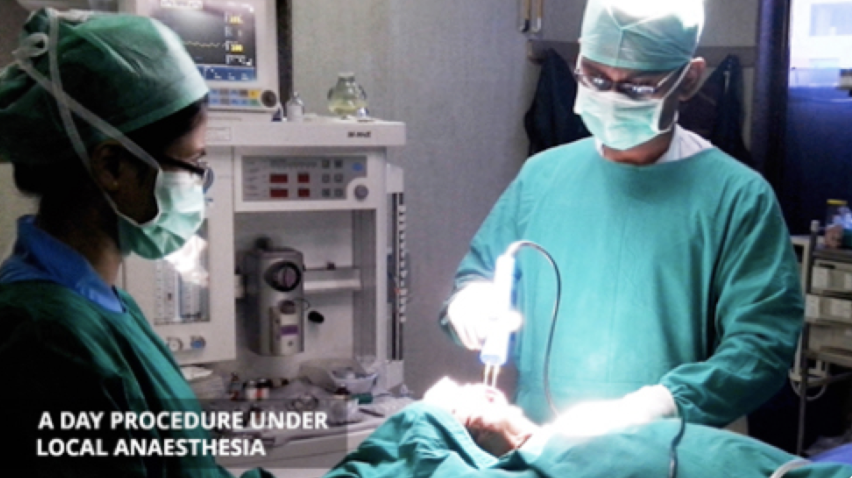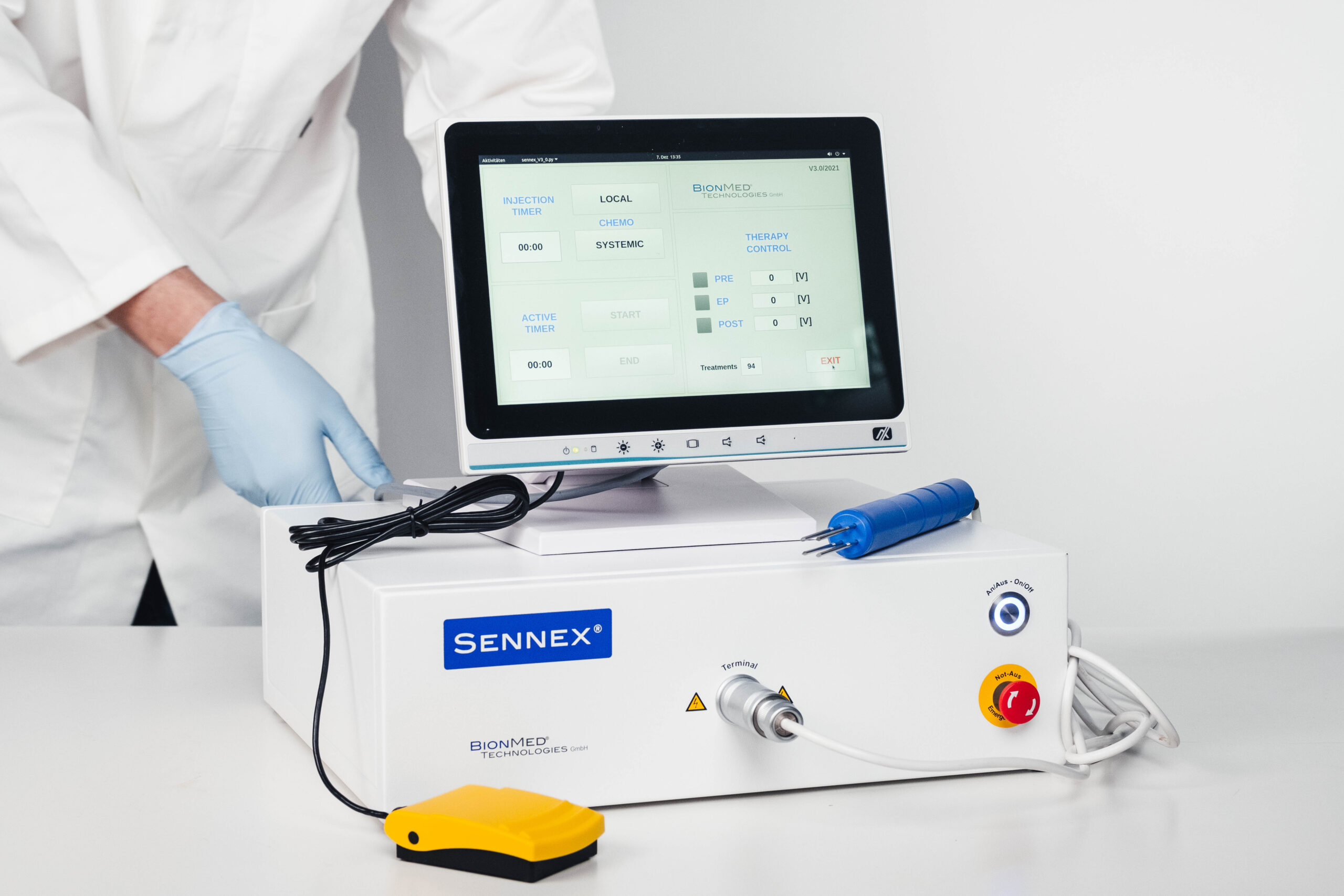
SENNEX® Electrochemotherapy (ECT) is a local treatment. It is recommended for treatment of cutaneous and subcutaneous metastases independent of the primary tumour type. It can also be used as a palliative treatment for head and neck cancers recurring after multi-modality treatment. Small cutaneous metastases can often be treated in one session. In larger tumours, multiple sessions are often required and possible.

The SENNEX® Electrochemotherapy (ECT) device is designed for great ease of operation. The device is portable and can be assembled in a few minutes. Touch screen operations enable the user to enter patient details and a record is maintained. The user can view the therapy progress on-screen. The probe and foot pedal are designed for easy operation.

Comfortable touch screen operations and very simple menu logic.

Patient data and therapy parameters stored.

Comfortable touch screen operations and very simple menu logic.

Quick visual feedback on ‘therapy progress’.

Portable medical device.
SENNEX® IS A CERTIFIED MEDICAL DEVICE


SENNEX® Electrochemotherapy (ECT) is a local treatment. It is recommended for treatment of cutaneous and subcutaneous metastases independent of the primary tumour type. It can also be used as a palliative treatment for head and neck cancers recurring after multi-modality treatment. Small cutaneous metastases can often be treated in one session. In larger tumours, multiple sessions are often required and possible.


ECT is a quick procedure which can be done under local or general anaesthesia. It usually takes about 20 to 30 minutes.
OnMed
Oncology Medical Devices AB
Copyright © 2012-2022
Address
Österlanggatan 18, 11131
Stockholm, Sweden
Contact
+46 (0)8 400 22 805
info@onmed.se